In the context of the current rapid advancement of high technology,3D printing technologyhas become a focus issue in industrial production, scientific research and people's daily lives with its unique production methods and broad application potential. Among many 3D printing technologies, selective laser sintering (also known as SLS) has emerged as a key technology to promote innovation and transformation in the manufacturing industry due to its high efficiency, flexibility and material diversity.
The purpose of this article is to conduct an in-depth study of the core concepts, manufacturing processes, material selection andapplications of selective laser sintering technologyin various fields, hoping to bring readers a comprehensive and in-depth understanding. By reading this article, readers can gain a deeper understanding of the core position that SLS technology occupies in contemporary manufacturing and the value it brings, as well as how it helps the manufacturing industry move towards a more efficient, environmentally friendly and more personalized direction.
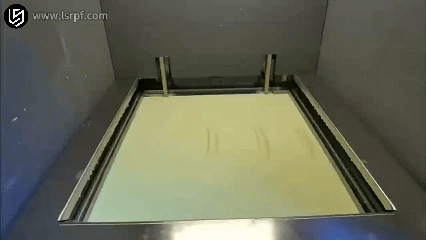
What is selective laser sintering?
Selective laser sintering (SLS) technology is a 3D printing method using powder materialsthat uses laser energy to melt and combine layers of materials to form the final three-dimensional part. During this process, a laser scans the powder bed precisely following each cross-sectional pattern of the 3D design. After each layer is completed, the build platform will drop to a certain height and then continue printing on the new layer. This step is repeated until all layers are built, resulting in a complete part.
Due to its unique advantages,SLS technologyhas become the first choice for a variety of functional applications, such as the manufacturing of snap connections, living hinges and other mechanical joints. In addition, its wide range of material options and large platform size also make SLS an ideal choice for the direct production of products with high strength and heat resistance requirements.
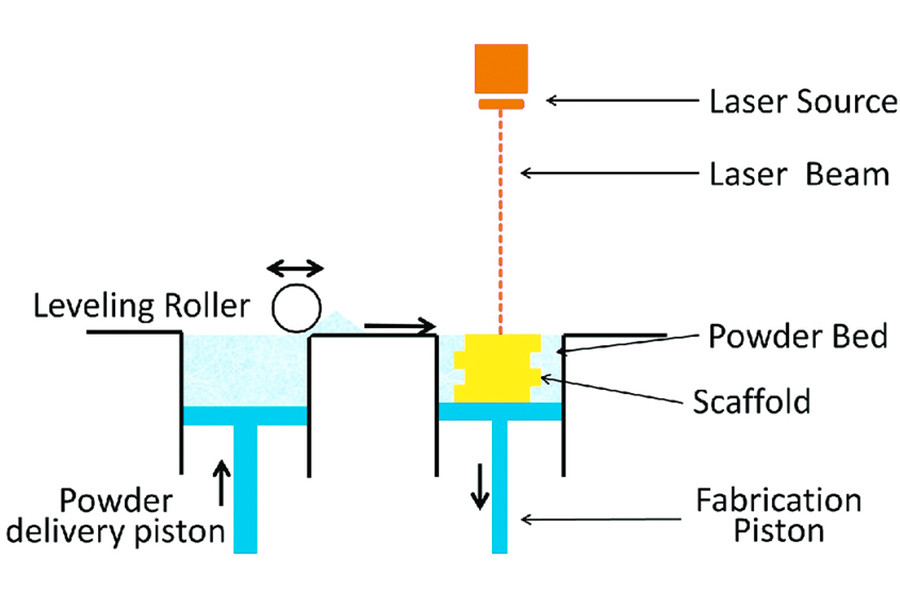
How Does the Selective Laser Sintering Process Work?
Theselective laser sintering processrepresents a cutting-edge 3D printing method, and its core working mechanism is mainly based on laser sintering and layered stacking of powder materials. Next is the detailed operation process of this process:
1.Apply powder:
On the operating table of the3D printer, a layer of homogeneous and compact powdery material must first be laid. Such powder materials may include plastics, metals, ceramics, etc. The specific selection is based on the characteristics of the printed items and the needs of the actual application.
2.Preheating process:
Heating a powdered substance to a temperature that is just below a specific level of its sintering point. This step helps ensure a uniform sintering process of thepowder materialand also improves printing efficiency.
3.The sintering process is carried out using lasers:
A control system directs the laser beam to scan over the powdery layer according to the cross-sectional shape of the layer. Due to the high energy of the laser beam, the temperature of the powder quickly rises to the melting point, where it undergoes a sintering process and is bonded to the already formed part below. The key link in theSLS processis this step, which successfully builds every hierarchical structure of the object through the fine scanning and sintering process of the laser.
4.Stacking in layers:
After completing thesintering processof the first layer, the thickness of the workbench is reduced by one layer, which is usually consistent with the thickness of the powder layer. Next, a new layer of powder is added to the powder roll and the new section is sintered. This process is repeated until the entire object is finally printed.
5.Post-processing:
After printing is completed, a series of post-processing work is required. This includes removal of excess powder, support structures (if support structures are used), and possible surface preparation steps such assanding and polishing. These post-processing tasks help improve the surface quality and accuracy of printed objects.
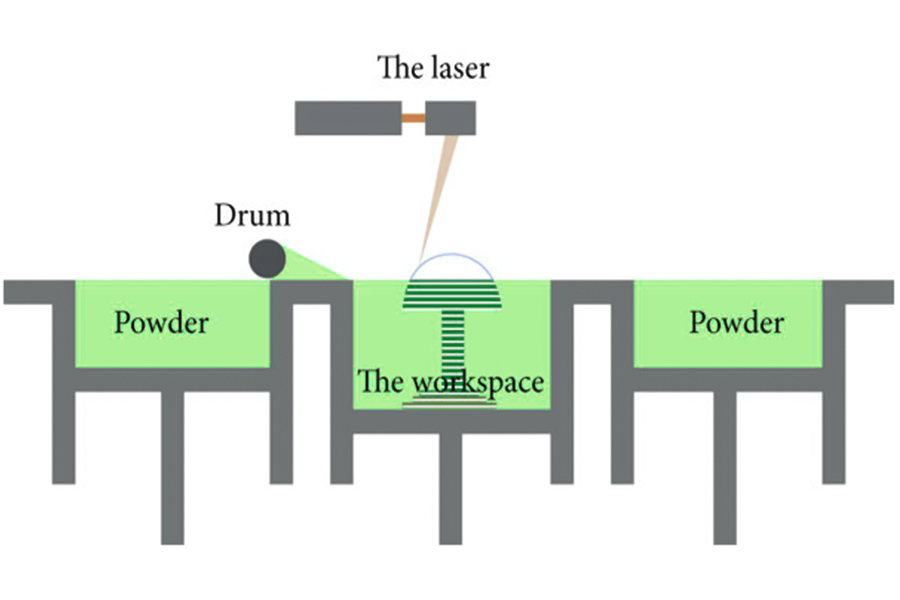
What Are the Key Advantages of Selective Laser Sintering?
Selective laser sintering technology has many core advantages,making it the preferred solution in the manufacturing process.
1. Able to print a large number of parts quickly
A large number of parts can be printed in a short time. This is a significantadvantage of selective laser sintering technology. SLS technology allows customers to compactly stack models within the space they build, which is an effect that other 3D technologies cannot achieve. It can even be done automatically using the nesting function, thus greatly reducing the time required for printing.
2. Parts are highly flexible and precise
This 3D printing technology can do things that most traditional manufacturing processes cannot, which says a lot. This is because of the precision of the laser. SLS can produce parts with high precision and complete shape flexibility without the need for support structures. For applications that require particularly complex geometries or precise shapes, SLS printing is an excellent option and worth the investment.
3.Excellent material quality
If you are looking for a 3D printing technology that can not only be used for prototyping but also meet higher requirements, SLS is undoubtedly the ideal choice. Its prints exhibit material qualities that are difficult to match with other 3D technologies. PA12 material, in particular, is favored for its excellent mechanical strength and impact resistance.
4.Ideal for functional design
Selective laser sintering technology is particularly suitable for applications where the design is highly dependent on specific functionality, such as flexibility mechanisms. In the SLS process,3D productsare formed directly in the power bed without the need for support structures, which allows complex features such as internal moving parts and overhanging structures to be presented in a way that is difficult to achieve with traditional production. Additionally, multiple parts can even be printed as an integral assembled unit.
5.Extensive material selection flexibility
SLS technology offers an extremely rich range of material options, and this range continues to expand. Whether you are looking for strong and durable materials or prefer soft and flexible materials, SLS printing can easily meet the needs. This feature gives SLS great flexibility in material selection. What is particularly worth mentioning is that thanks to a unique design, users do not need to worry about the inconvenience of printer cleaning when changing different powder materials.
6.Excellent part quality and detail presentation
In terms of dimensional accuracy, selective laser sintering parts show strong competitiveness and can be called the leader in rapid prototyping technology.SLS technology enables the easy fabrication of fine elementssuch as thin vertical walls, demonstrating an extremely high level of quality in products. Essentially, SLS technology makes it possible to create lightweight and efficient shapes.
7.Advantages of not requiring support structures
A significant advantage of selective laser sintering compared to many other additive manufacturing technologies, such as stereolithography, is that it does not require support structures. During the printing process, the powder itself acts as a self-supporting element. Because the powder evenly covers the entire print area, the printed part is essentially self-supporting, greatly reducing the need for labor- and resource-intensive support post-processing steps.
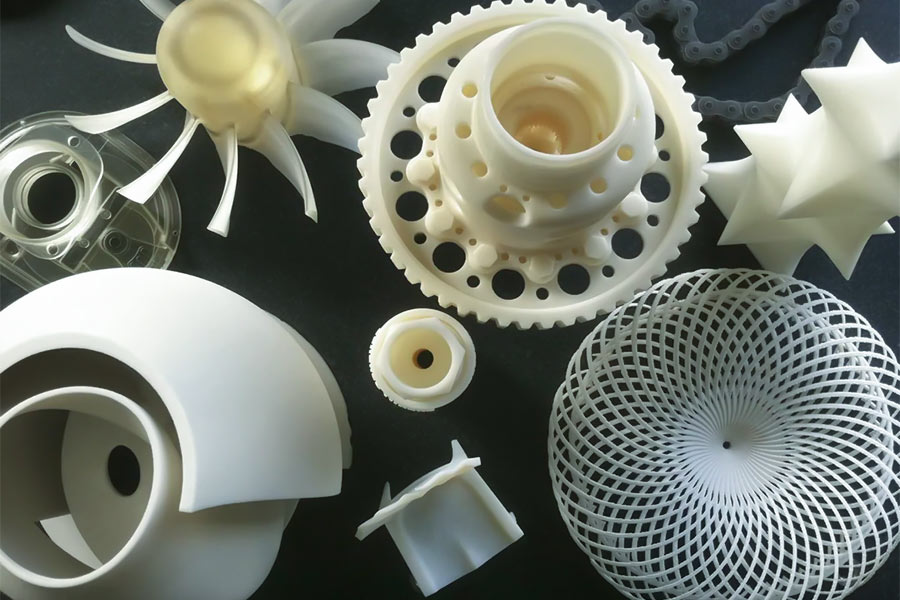
What Are the Limitations of SLS?
Although Selective Laser Sintering (SLS) is one of the most efficient methods in the field of 3D printing, it also comes with some inherent limitations and shortcomings.
1.Dimensional shrinkage during cooling
A majordrawback of SLS technologyis the possible dimensional shrinkage caused by the cooling phase after production is complete. Although the print bed is preheated to eliminate temperature differences and minimize shrinkage, once the product cools, its dimensions may change significantly due to thermal expansion and contraction.
2.Surface roughness problem
SLS parts tend to have less than smooth surfacesdue to the powder particles used in their manufacturing process. These powders may not fully fuse during the melting process, causing the surface of the part to appear porous, affecting its appearance and texture.
3.Complex post-cleaning process
Another challenge withSLS technology is the complexityof subsequent cleaning procedures. This process requires separating the printed parts from the lumps of metal or polymer powder (i.e. unpacking) and using compressed air to clean the final product. This step can be quite tedious.
Safety hazards of powder materials
The fine powders used in SLS technology, especially metal powders, may pose a potential threat to human respiratory health. Not only can some powders cause respiratory problems, they can also be explosive, so strict safety measures and protective equipment must be taken.
4.Limitations of design and material selection
For users accustomed to fused deposition modeling (FDM),designing SLS parts may face a certain learning curvebecause there are significant differences in the design philosophies of the two technologies. Additionally, the material options available in SLS production are relatively limited, which means it may not be suitable for all types of 3D printing applications.
What Are the Applications of Selective Laser Sintering?
Selective laser sintering (SLS), as an advanced 3D printing technology, has a wide range of applications. The following is a detailed summary of the main application areas of SLS technology:
1.Aerospace industry
Selective laser sintering (SLS) technology has demonstrated its unique application value in the aerospace field. The industry has adopted SLS technology with the aim of reducing manufacturing cycle times. Engineers use additive manufacturing technology to manufacture parts, a change that not only reduces costs but also significantly shortens production time. Advances in the aerospace industry have also benefited from the development of new high-temperature materials. Additive manufacturing has long been an important part of aerospace applications. Recent technological advances have shown that SLS technology can further improve the operational efficiency of the aerospace supply chain. In the aerospace field, SLS technology has had a profound impact from product design and parts production to assembly and maintenance. As an efficient means of rapid prototyping, it saves the industry valuable time and money throughout the product development cycle.
2.Medical industry
The medical industry is gradually increasing its adoption of selective laser sintering (SLS) technology. Although SLS technology was originally designed for manufacturing, it has shown great potential and attracted widespread attention in the medical field. Traditional manufacturing methods for surgical instruments and implant-grade materials rely primarily on casting or machining. However, with the application of SLS printers, the medical industry can quickly produce models, tools and parts. In fields such as orthopedics, biomedical engineering, dentistry, and neurosurgery, SLS technology has been used to create structural models. These models play an important role in medical diagnosis, treatment planning and implant manufacturing. In addition, SLS technology is being intensively studied to create implants with unique geometric properties, such as tissue repair scaffolds. With the advancement of technology, the SLS model has proven its effectiveness in a variety of surgical procedures and is expected to open up more applications in the medical field.
3.Automotive industry
Theapplication of selective laser sintering (SLS) technology in the automotive industryis not surprising, especially considering the continuous technological innovation in this industry. SLS technology is not only used in mass production car manufacturing, but also helps racing teams develop innovative designs and test them at faster speeds. Formula 1 is an excellent example of a racing organization successfully leveraging SLS 3D printing technology, enabling parts to be rapidly produced, tested and optimized to ensure superior performance. In addition to core and complex components, SLS technology plays a key role in the design of the racing aerodynamic structure.
4.Rapid prototyping applications
Compared with other additive manufacturing processes,Selective Laser Sintering (SLS) technology produces materialswith similar properties to machined parts. This means SLS parts can be used for functional testing and marketing demonstrations, accelerating time to market for new or improved products. As SLS technology becomes more widely used in today's society, the challenges of bringing products to a wider market have been significantly reduced.
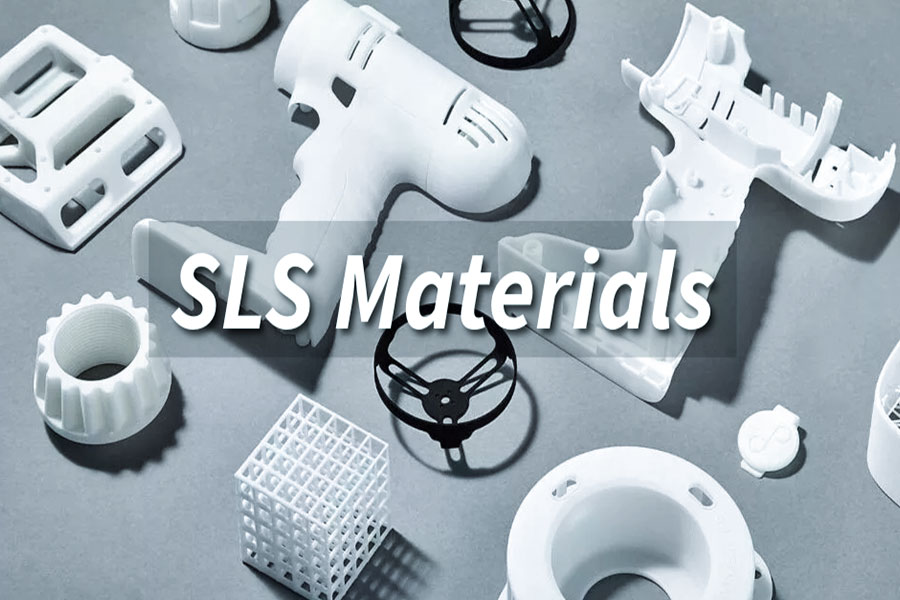
How Does SLS Compare to Other 3D Printing Technologies?
When choosing a 3D printing technology, it is important to understand the characteristics and advantages between different technologies. The following is a comparative analysis of Selective Laser Sintering (SLS) and several other mainstream 3D printing technologies:
| Technology | SLS | SLA | FDM | DMLS |
|---|---|---|---|---|
| Type of material | Polymer powders, metal powders (for DMLS) | Liquid photosensitive resin | Thermoplastic filaments | Metal Powders |
| Surface | Average (can be improved with post-processing) | Very smooth | General (with lamellar) | General (metallic, post-processing required) |
| Precision | high | high | medium | high |
| Durability | High (Polymer), Very High (Metal DMLS) | medium | medium | Very High (Metallic) |
| Print speed | medium | almost | slow | Slow (complex metal printing) |
| Cost | Medium (depending on material) | High (Equipment & Maintenance) | Low (Equipment & Materials) | High (Equipment & Materials) |
| Post-processing | Required (cleaning, curing, etc.) | Required (curing, support removal) | Required (support removal, sanding) | Required (cleaning, support removal, heat treatment) |
| Design & Material Flexibility | High (a variety of powders available) | Medium (limited resin variety) | High (a variety of plastics available) | Low (metal powder only) |
| Application scenarios | Rapid prototyping, functional parts | Fine prototyping, artwork | Prototyping, education, DIY | Rapid manufacturing of metal components, aerospace |
Summary
Selective laser sintering is arapid prototyping technologythat uses laser beams to selectively sinter powder materials to build three-dimensional solids layer by layer. Selective laser sintering, as an efficient, flexible and widely used 3D printing technology, is gradually changing the production model and design concept of traditional manufacturing. With the continuous advancement of technology and the expansion of application fields, we have reason to believe that SLS technology will play a more important role in the development of the manufacturing industry in the future.
Disclaimer
The content on this page is for reference only.LSdoes not make any express or implied representation or warranty as to the accuracy, completeness or validity of the information. No performance parameters, geometric tolerances, specific design features, material quality and type or workmanship should be inferred as to what a third party supplier or manufacturer will deliver through the Longsheng Network. It is the responsibility of the buyerseeking a quote for partsto determine the specific requirements for those parts.Pleasecontact usfor moreinformation.
LS Team
LS is an industry-leading companyspecializing in custom manufacturing solutions. With over 20 years of experience serving more than 5,000 clients, we focus on high-precisionCNC machining,sheet metal fabrication,3D printing,injection molding,metal stamping,and other one-stop manufacturing services.
Our factory is equipped with more than 100 advanced 5-axis machining centers and is ISO 9001:2015 certified. We provide fast, efficient, and high-quality manufacturing solutions to customers in over 150 countries worldwide. Whether it’s low-volume production or large-scale customization, we can meet your needs with delivery as fast as 24 hours. ChoosingLS Technologymeans choosing efficiency, quality, and professionalism.
To learn more, please visit our website:www.lsrpf.com
FAQs
1.What is Selective Laser Sintering?
Selective laser sintering (SLS for short) is an advanced rapid prototyping technology that uses a laser beam as a heat source to selectively sinter powder materials and build a three-dimensional solid model or part through layer-by-layer accumulation.
2.How does SLS technology work?
The working principle of SLS technology is based on the discrete-stacking principle. First, the powder material is preheated to a temperature slightly below its melting point, and then under computer control, the laser beam selectively sinters based on layered cross-section information. After one layer of sintering is completed, the workbench is lowered by one layer, and a new layer of powder is spread, and a new layer of cross-section is sintered. This is repeated until the entire three-dimensional solid structure is completed.
3.How much does SLS technology cost?
Cost depends on factors such as powder material selection, part size and complexity, equipment investment and operating costs. In general, SLS technology can cost more than some other 3D printing technologies, but less than traditional manufacturing methods.
4.What are the application fields of SLS technology?
Because SLS technology has many of the above advantages, its application scope is increasingly wide. At present, SLS technology has been applied in many industries such as aviation, aerospace, machinery, automobiles, electronics, construction, medical and fine arts, especially in areas requiring rapid prototyping, small batch parts production and personalized customization, showing great potential.
Resource
2.Study on high temperature sintering processes of selective laser sintered Al2O3/ZrO2/TiC ceramics







